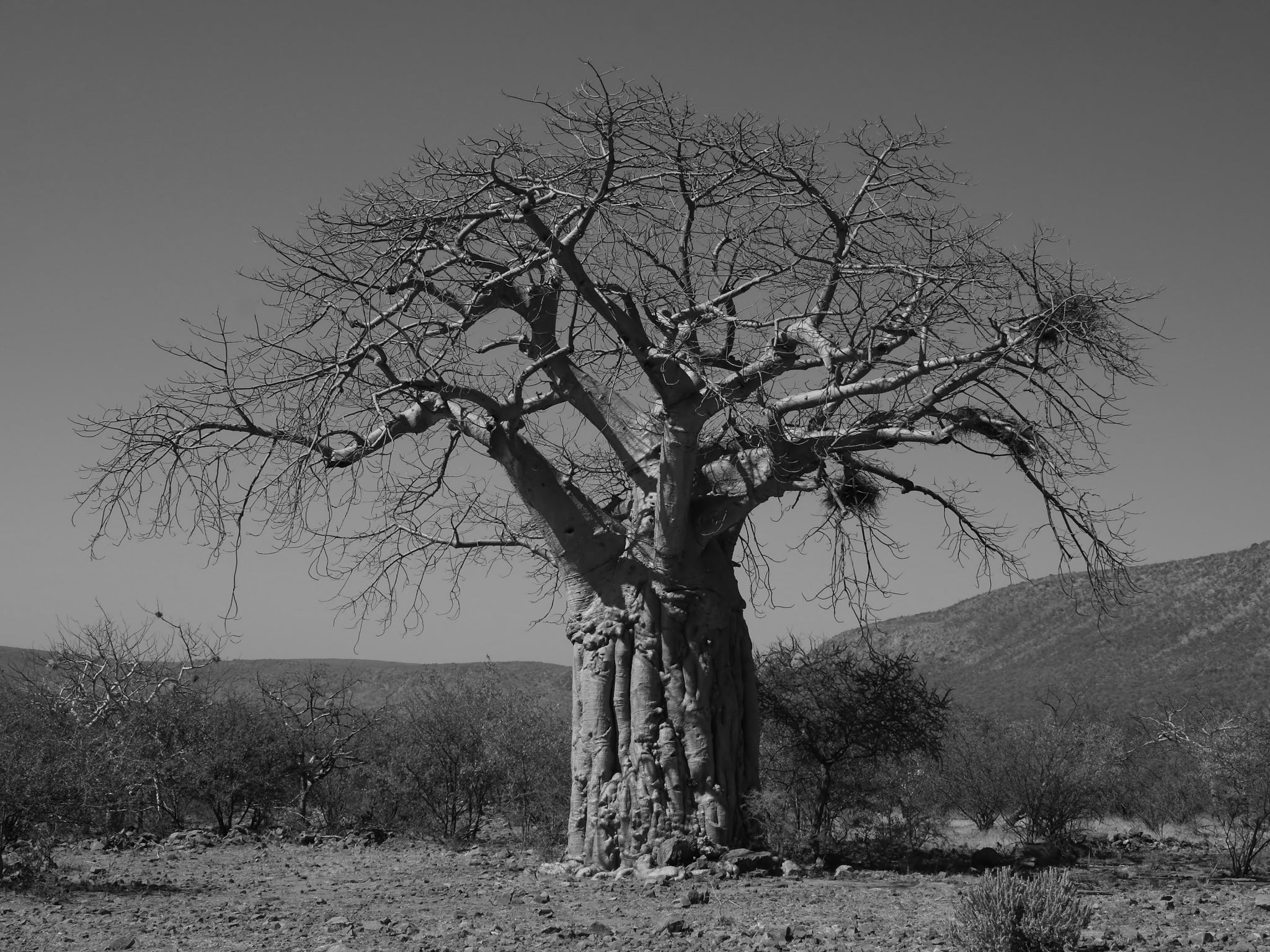The Baobab of the Regiment( Teyboumet Al Jeiche)

A pharmacy tree for all Africans, the baobab enjoys a special status in the continent and more particularly in the Sahel. it is called "Teydouma" in the local dialect, a feminine name. In the local dialect, trees are feminine. Teydouma is a feminine as feminine is maternity, the education of children, and the protection of the very young. When a baobab, a Teydouma, is in bloom and ready to give fruit, it is said of her that she is pregnant. This surge of sap, the explosion of buds and the flowers that ensue are quite comparable to the rise of milk, the pregnancy and the blossoming of the body of the woman waiting to give life.
It is also said that the baobab tree is upside down. Its branches, often weakly covered with leaves, look like inverted roots. Legend has it that God decided to finish creating nature in seven days. The first days, he took his time and applied himself with great care to carve the orchids with their sensual petals, to draw the delicate curves of the irises and to execute the very fragile confetti of poppies. On the seventh day, he was left with a lot of plant mass and all the savannah of the Sahel to cover. A little in a hurry and ready to finish his creation in seven days, God picked up large blocks of vegetable paste and threw them as far as possible and in all directions. It is these blocks, sparse and inordinate sizes, that became our old baobabs. Most fell backwards, pointing their roots to the sky, a little as if they were imploring him so that he would not forget them in the distribution of the rain.
But the baobabs are getting less rain. The Sahel is in desolation, the dunes of the desert, like thirsty tongues of fire, sink deeper daily into what used to be the Sahel savannah. The large baobabs which served as landmarks for travelers, have now completely disappeared after being eaten by insects and turned into cathedral termites.
This was the case of the "Teydouma of El Jeïche", the majestic baobab which towered over all the surrounding shrub savannah in the badely region.
The tree was so imposing that it was used as a camp base for an entire regiment. Given its position and size, it also served as an ideal control tower; it was big enough to climb stand on its branches to be able to view the surrounding plains within at least thirty kilometers radius
The baobab is not just an imposing tree, it also produces bulky fruits filled with dried pulp, fiber and oilseeds. Its leaves are used to make the famous "Lalo" powder that is added to thicken sauces and to thicken them and home-made couscous to give it a slippery texture.
Today, the members of the Badely Cooperative have decided to revive the "El Jeïch Teydouma" and with it several hundred other baobabs and other trees that the desert advance and the unconsciousness of men made it disappear.
In their field, the Badely cooperative in collaboration with the United Nations Development Program (UNDP) and Toogga, they decided to create a nursery of three thousand trees including 500 baobabs, balanites, jujubes ... to plant around their perimeter, and to also distribute it throughout the Brakna Sahel region.
